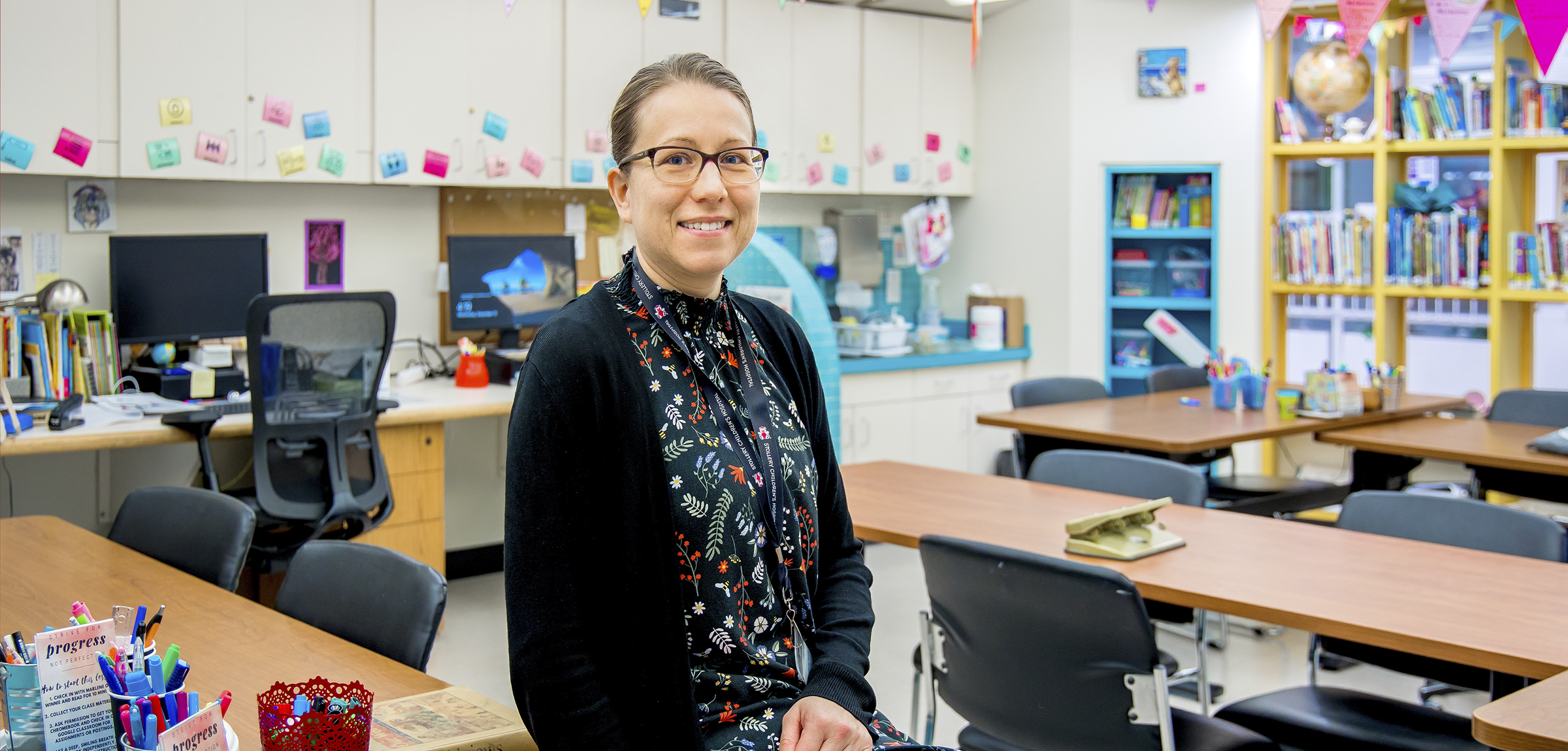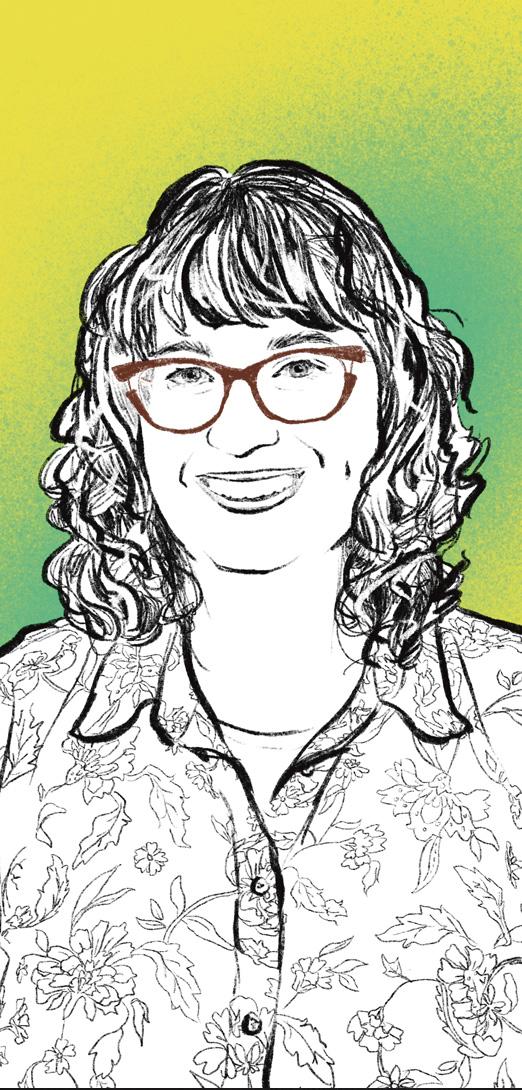Heidi Hughes
Location— Stollery Children's Hospital School
Teaching experience— 19 years
Time in current setting— 8 years
A hospital school provides students with some measure of stability during a time of adversity.
What do you teach?
Primarily all math and science courses from grades 7 to 12 at the Stollery. Being in a unique setting such as a hospital, I also have the opportunity to teach elementary, option courses, as well as support humanities courses where needed. I am also the math/science department head for Hospital School Campuses, which is part of Edmonton Public Schools and serves multiple hospital locations.
How many other teachers are there in your setting?
There are four other teachers at the Stollery, but many more teachers, support staff and mental health therapists within the Hospital School Campuses.
What is special/different/unique/interesting about your teaching setting?
On any given day, the staff here are teaching many different subjects all at the same time. This aspect of our work gives our classroom a one-room schoolhouse feel. Our students range from grades 1 to 12 and they all share the same learning environment. This is challenging, but very rewarding—it builds a strong sense of community and belonging.
At the Stollery, no day is the same. We work and learn in a dynamic environment. Students register and join the class at any point in the year, and they are typically all at different points on the curricular spectrum. We meet them where they are at and we pride ourselves in our flexibility. Students transition between classroom and bedside and as teachers, we partner with Alberta Health Services, families and schools all over the province in order to meet student needs.
What do you find rewarding about teaching in this environment?
I have always found that one of the most rewarding aspects of working at the Stollery is being able to provide a sense of normalcy for students as they and their families are going through adversity. Some students will be with us for a few months, others will write diploma exams and graduate with Hospital School Campuses.
A student’s role is to learn. Adversity can rob a student of this and leave them in a strange limbo. When they have the opportunity to continue learning, it grounds them. The restoration of their academic equilibrium is very therapeutic and integral to their recovery as well as their ability to reintegrate back to their normal lives and community schools.
I love to see students succeed and in this place, I can really see their strength and resilience. Here, I am able to work in a partnership as part of a multidisciplinary team that is centered around the child and their family. The difference that education makes in restoring normalcy and hope for a better future is incredible.
The difference that education makes in restoring normalcy and hope for a better future is incredible.
What are the main challenges?
The Stollery is inherently challenging. There are always a lot of moving pieces here: the diversity of the students and their unique needs, and teaching a multitude of subjects at the same time means that I have to be flexible. I have to be an educator and I have to understand all of the factors that are impacting a student’s emotional and academic well-being as they navigate their recovery.
What skills/traits/aptitudes does a teacher need to thrive in this environment?
Flexibility: being able to adapt and adjust on the fly for all of the things that change, such as new students on a daily basis, or bedside teaching when students cannot come to class.
Empathy, but also the ability to stay in the lane of education.
Strong communication skills: with students, parents, medical staff, the mental health transition team, receiving schools (if applicable) that the student is going back to.
Soft skills: being in tune with the sensitivities of situations and what students are going through.
You have to really know the curriculum—vertically and horizontally … all courses— and maintain academic rigour and pacing in challenging circumstances.
Can you relate a specific situation that illustrates the unique nature of your current teaching assignment?
Four years ago, a student came to the school in the summer of their Grade 9 year. The student had been an honours student before being hospitalized, and achievement had always been a top priority. This was a learner who desperately wanted to feel normal again and regain what had been taken from them.
Due to their circumstances, the student had to relearn how to speak, walk and write— including how to write with the opposite hand. Sometimes we were only able to do 15 minutes of instruction in a session.
In time, however, the tireless efforts of physical therapists, occupational therapists, psychologists, nursing staff, doctors and teachers paid off and the student made significant gains. This student attended the Stollery School for three years. During that time, they were able to complete many high school courses, some with high honours. Eventually they were able to successfully transition back to a community school.
Now they are continuing their education and even volunteering in the community.
Where fluctuation is a constant
A hospital school provides educational programming for students actively receiving medical treatment and is supported through a specialized education program agreement with the school authority.
All hospital schools are operated by a school division in collaboration with Alberta Health Services. These schools are subject to the Education Act in the same way other schools are.
In Alberta there are 11 schools that operate out of hospitals.
Students transition in and out hospital schools as their needs require, so hospital school enrolment fluctuates throughout the year, and year to year, as does the number of teachers needed.
-Alberta Education



